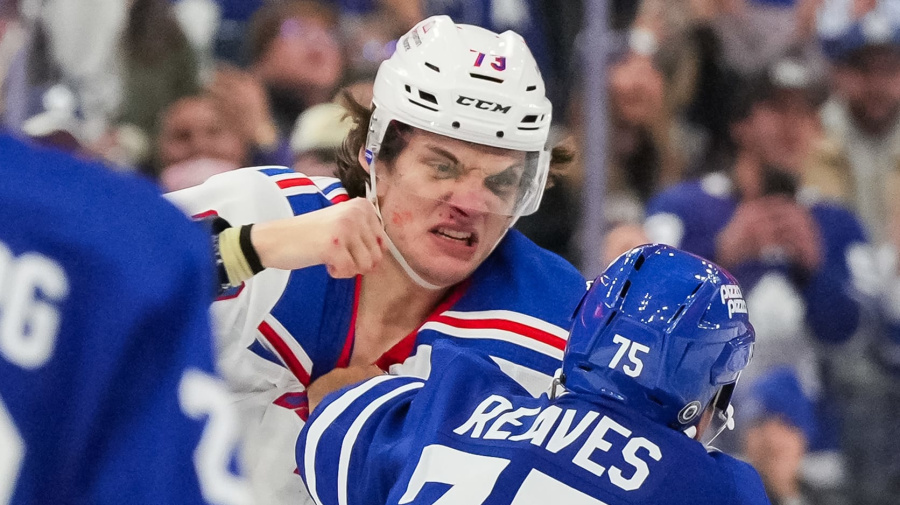
Matt Rempe is fighting the entire NHL. Will it boost or harm the league?
At the onset of the third period in Toronto on Saturday night, an anticipated event unfolded: Ryan Reaves, known for his toughness on the Leafs, engaged in a confrontation at center ice with Matt Rempe, the imposing rookie from the New York Rangers. Standing at 6 feet 7 inches tall and weighing 240 pounds, Rempe has garnered attention not only for his physical stature but also for his style of play. Despite registering only one goal and one assist in his first seven NHL games, he has amassed 37 penalty minutes, surpassing his time spent on the ice. Rempe embodies what many would classify as an “enforcer,” a role that has gradually diminished in prominence within the NHL in recent years.
Unlike traditional enforcers, Rempe has predominantly been involved in fighting rather than contributing to offensive plays. This departure from the norm reflects broader shifts within the NHL, prompted by various factors. The deaths of enforcers Derek Boogaard, Wade Belak, and Rick Rypien in 2011 underscored the dangers associated with their role, prompting calls for change. Furthermore, the advent of analytics has prioritized data-driven assessments of player performance, making enforcers less compatible with the evolving demands of the game. Additionally, there has been growing societal scrutiny of fighting in hockey, with concerns raised about its barbaric nature and its implications for player safety.
While fighting remains ingrained in hockey’s unwritten code of conduct, there is an ongoing debate within the sport about its place in the modern game. The clash between traditionalist views and progressive attitudes reflects larger societal shifts, with hockey caught in the crossfire. The resurgence of fighting, epitomized by Rempe’s aggressive style, has reignited discussions about the sport’s identity and values. Some argue that fighting serves as a necessary outlet for tension on the ice, preserving the integrity of the game’s unwritten rules. Others view it as an outdated and potentially harmful practice that detracts from hockey’s appeal and inclusivity.
As hockey grapples with these internal tensions, it also faces external pressures from broader cultural and political forces. Incidents like the controversy surrounding an NHL career fair event last year highlight how hockey can become embroiled in wider debates about identity and representation. Rempe’s emergence as a prominent fighter has the potential to exacerbate these tensions, either sparking a deeper reckoning with hockey’s culture or providing a cathartic release from external scrutiny. Ultimately, his fights may serve as a litmus test for the sport’s resilience and ability to adapt in an ever-changing landscape.







